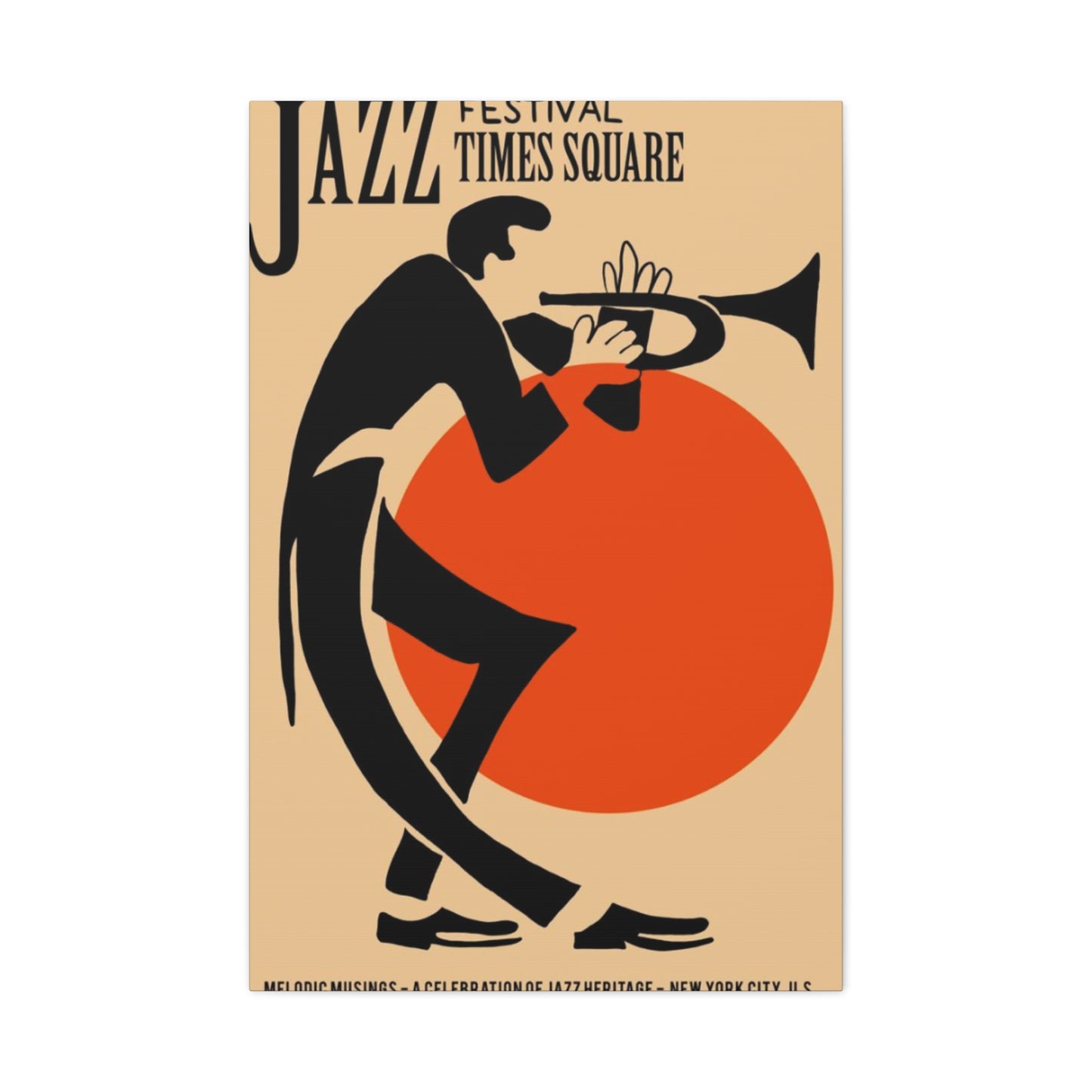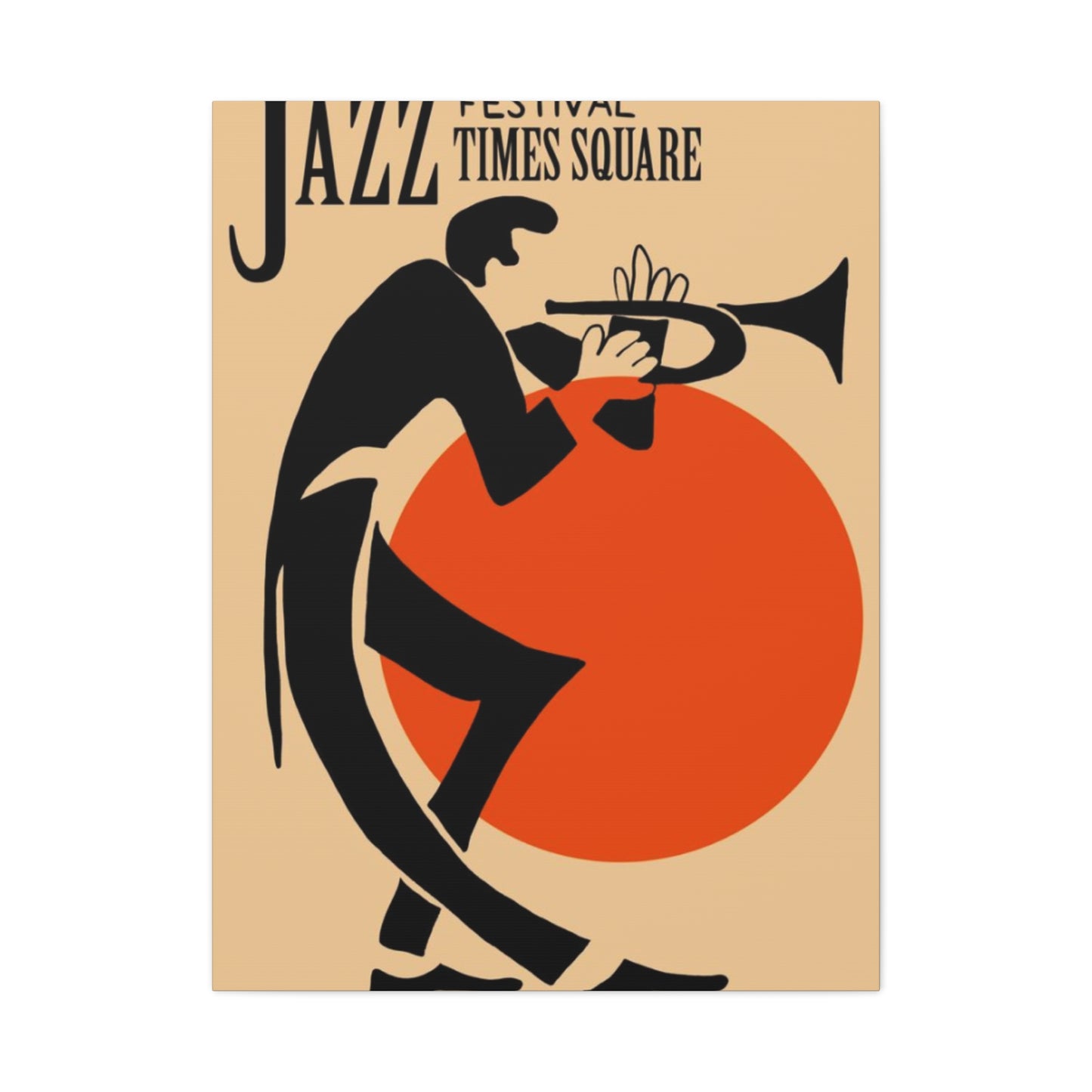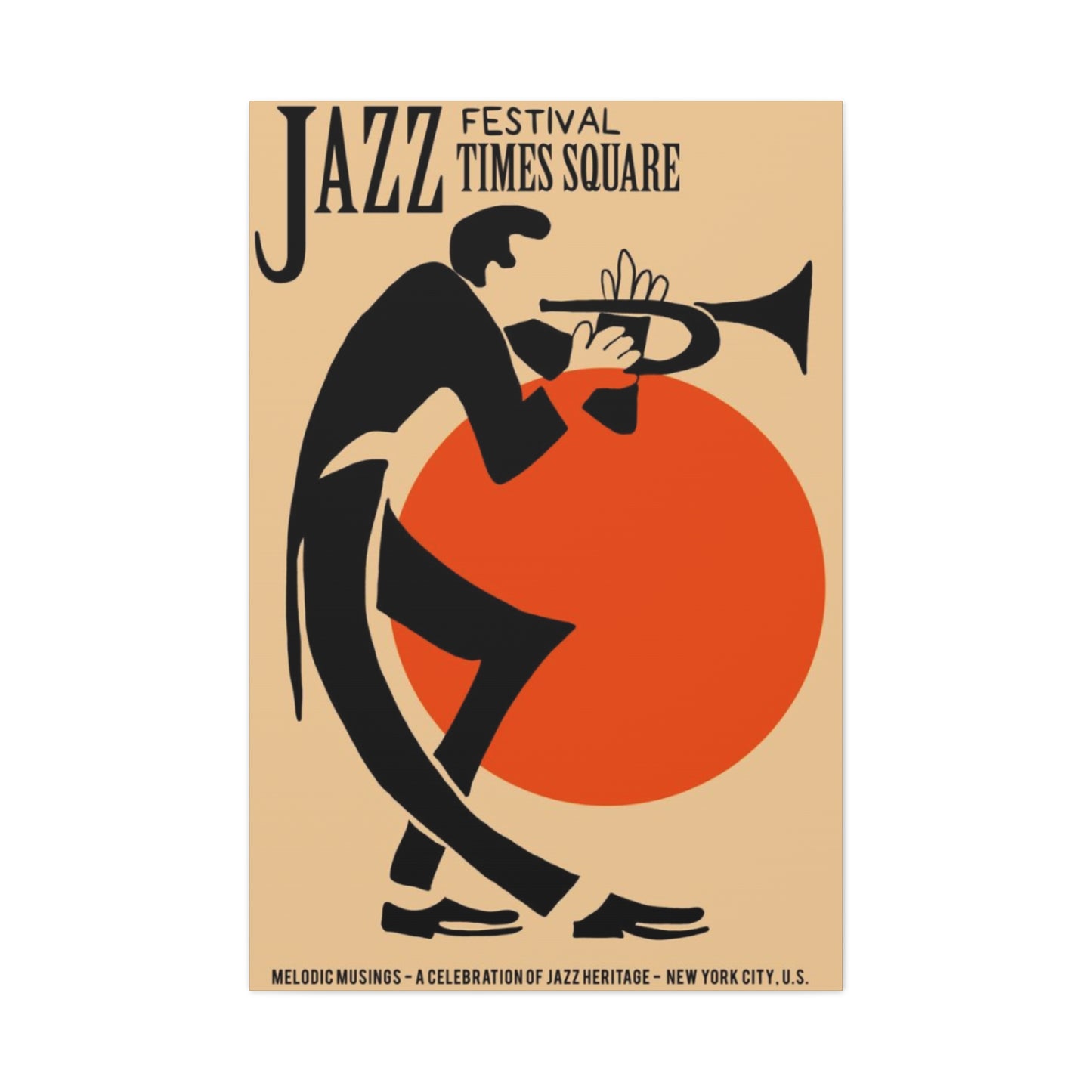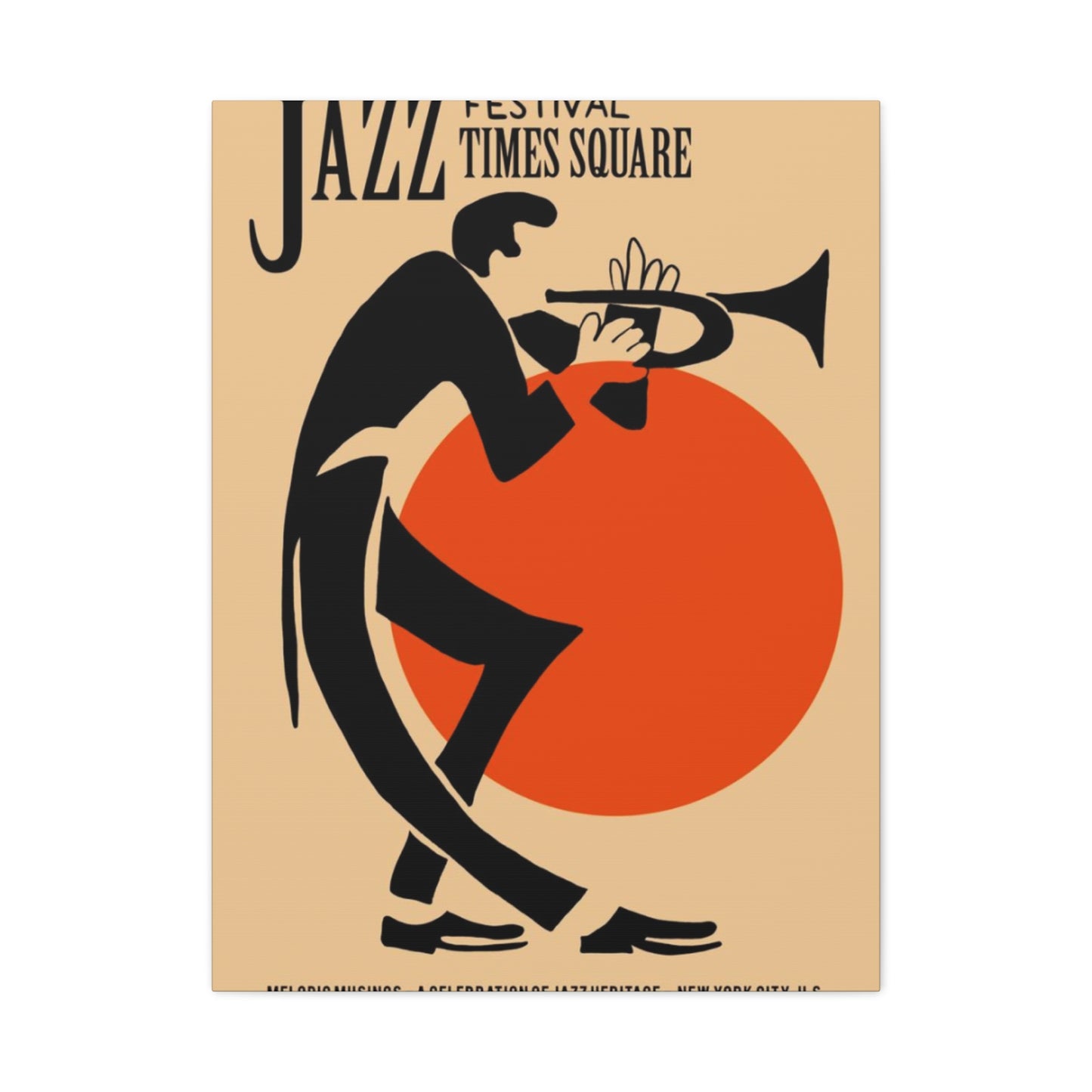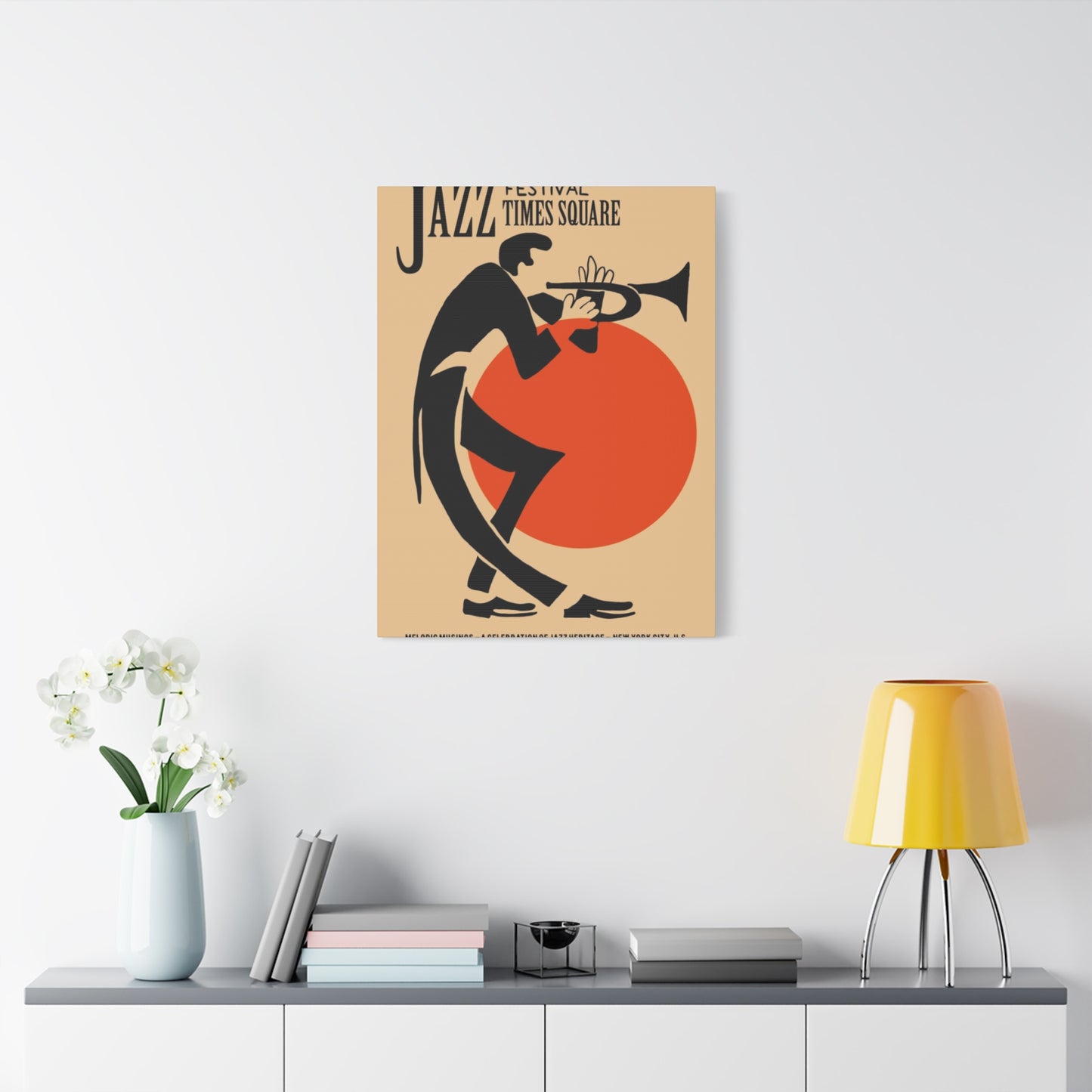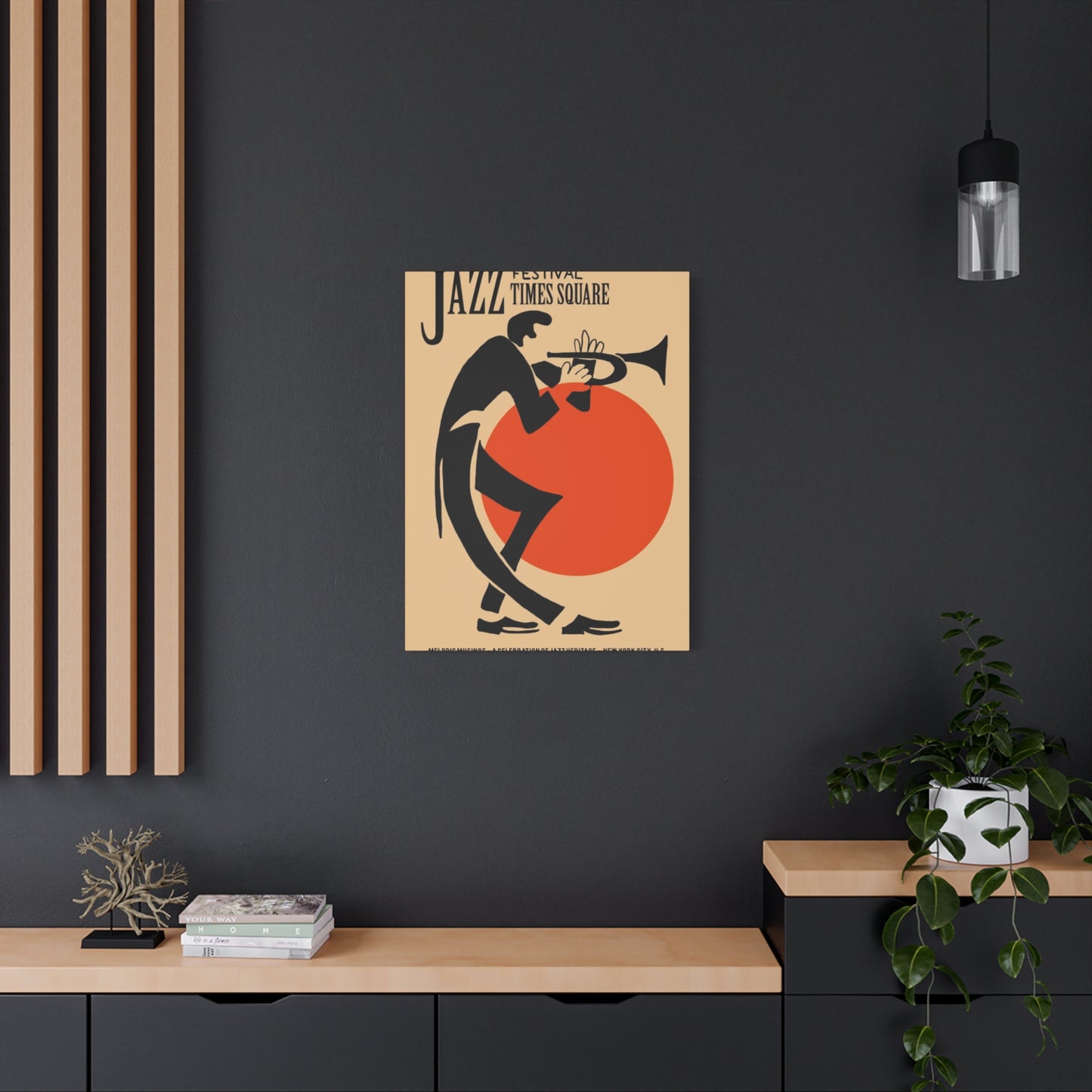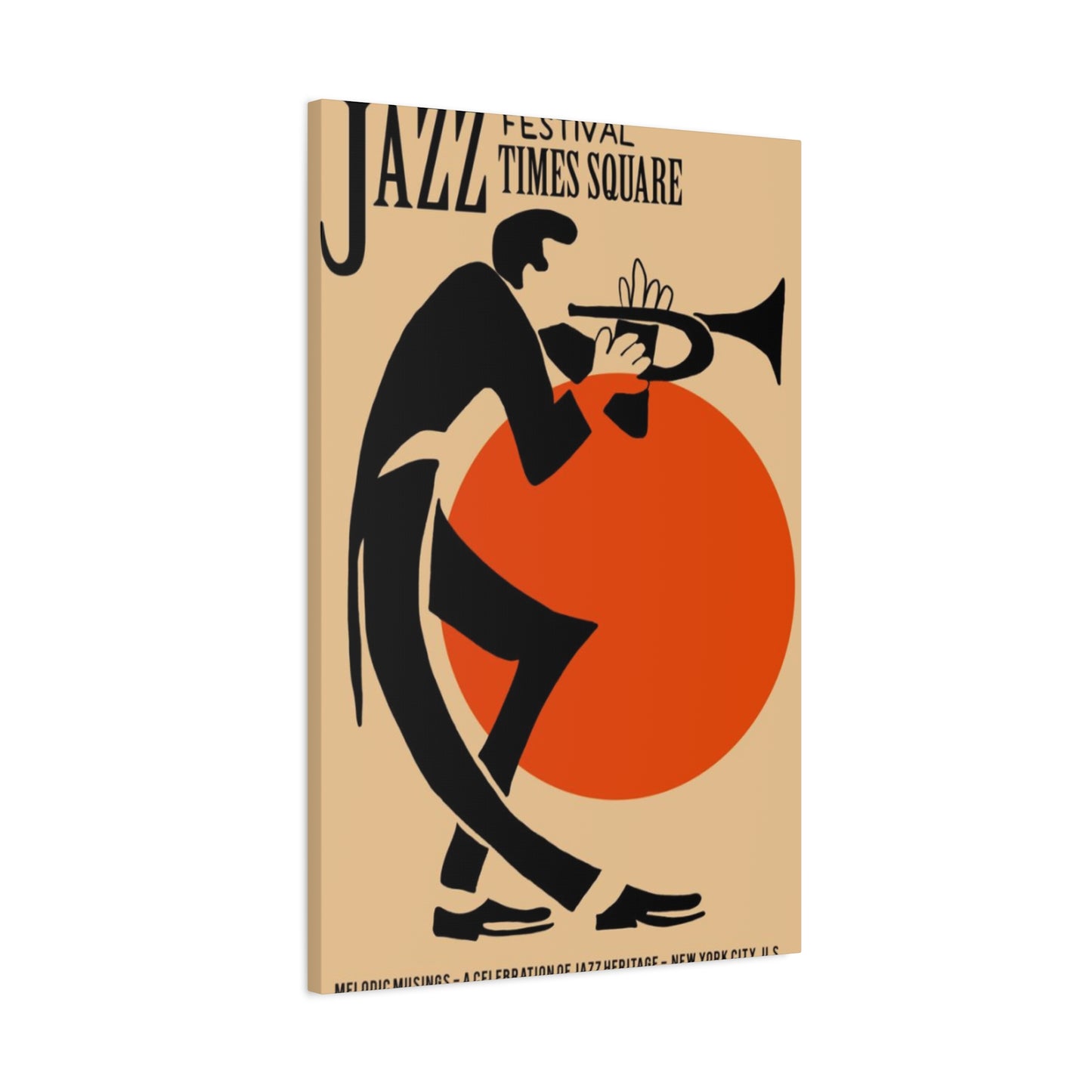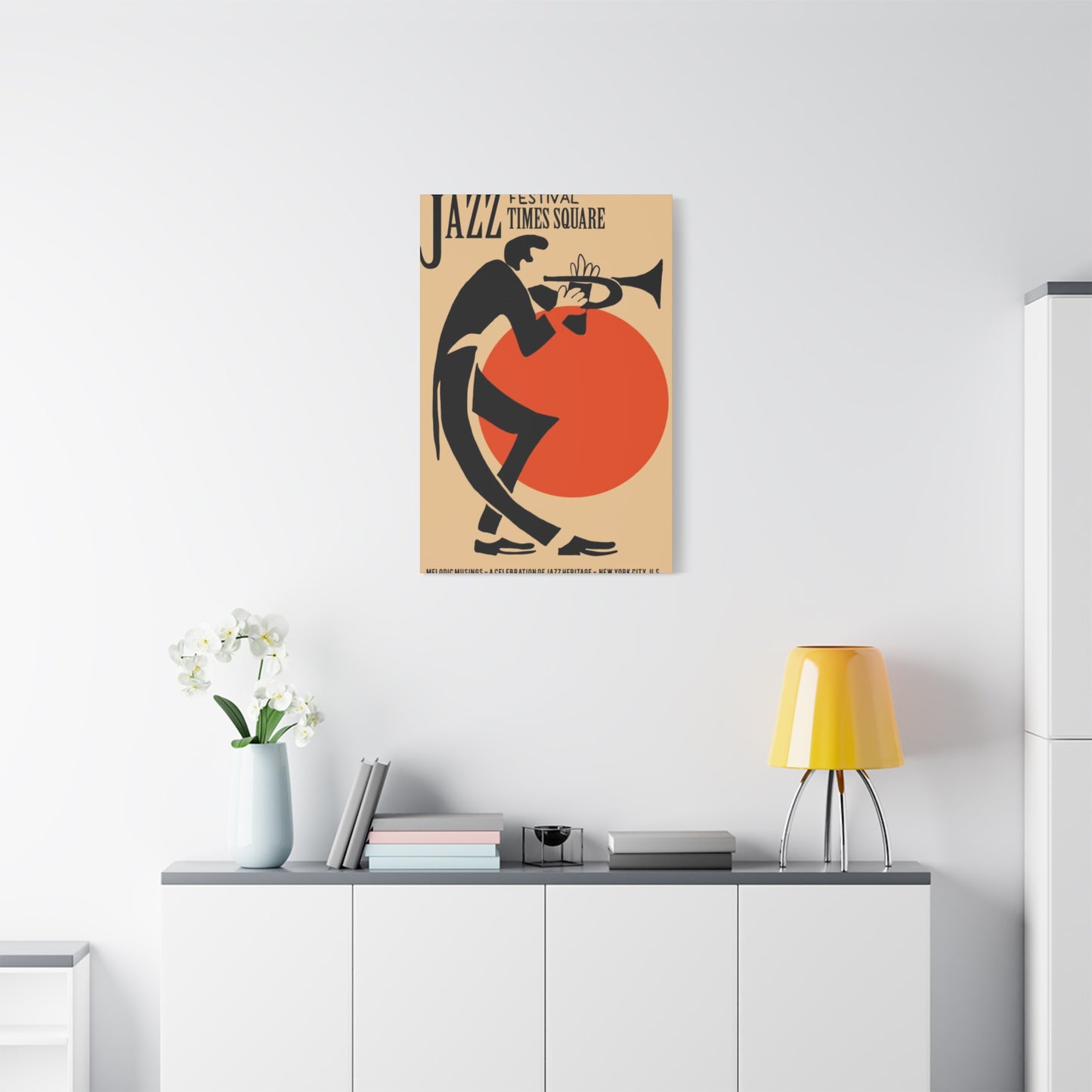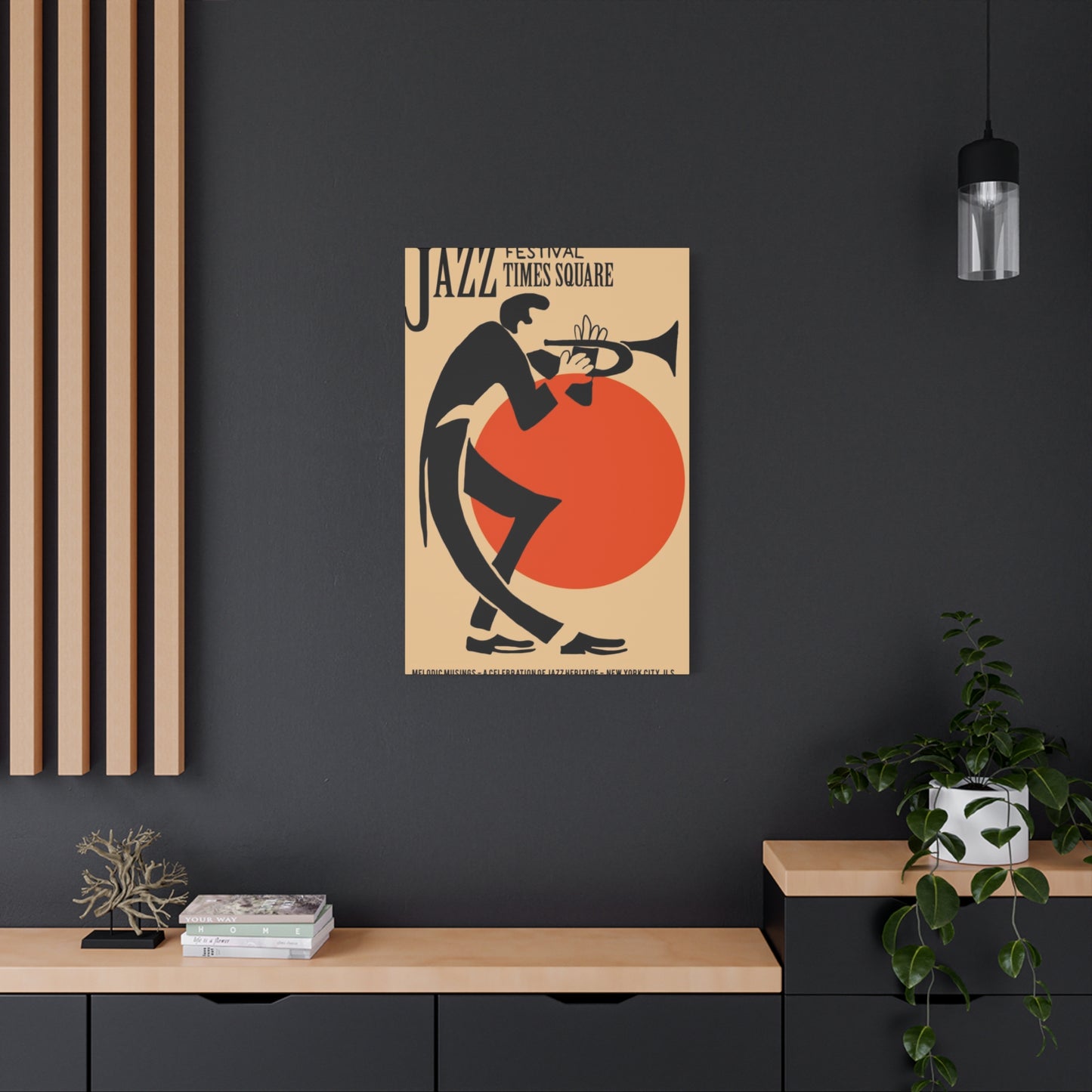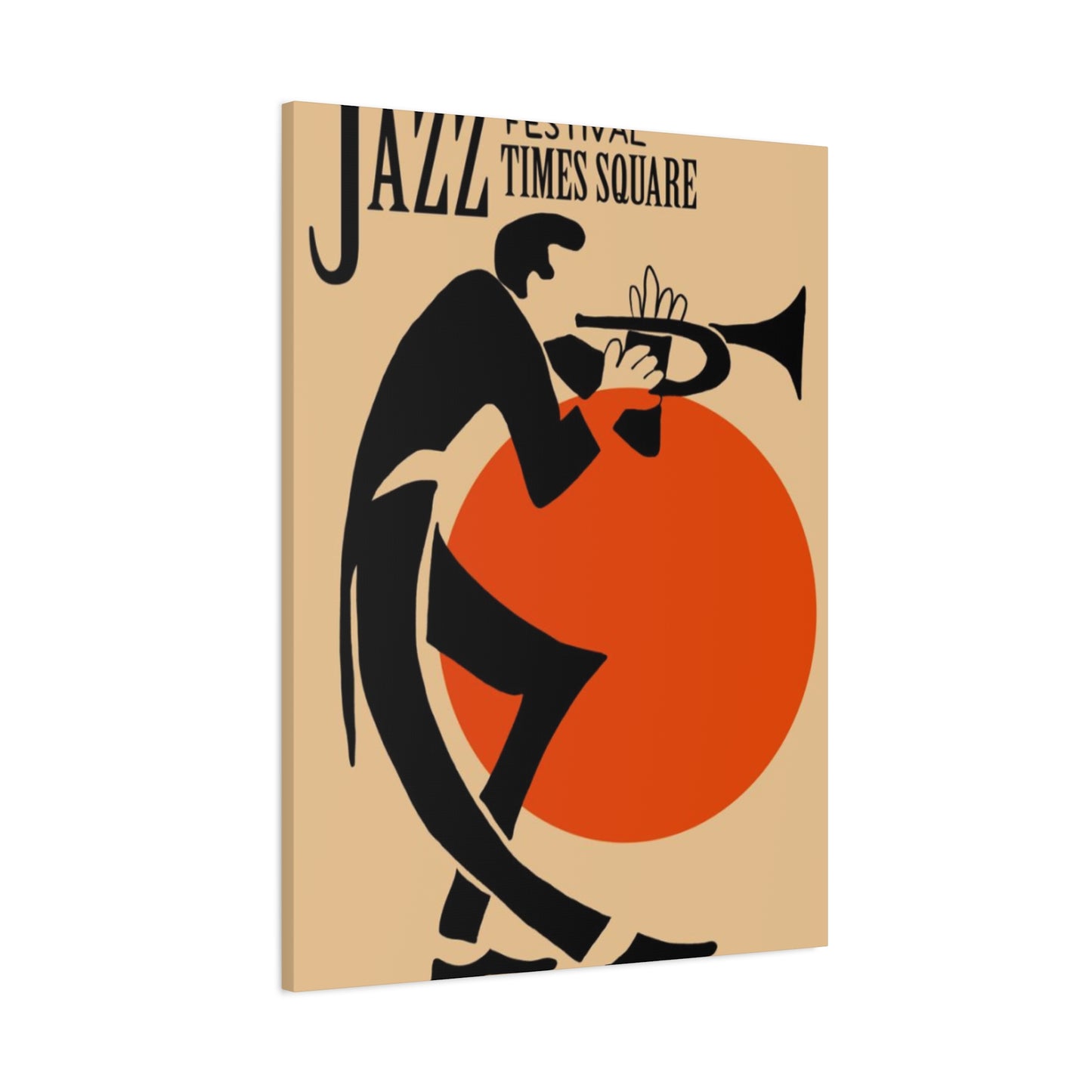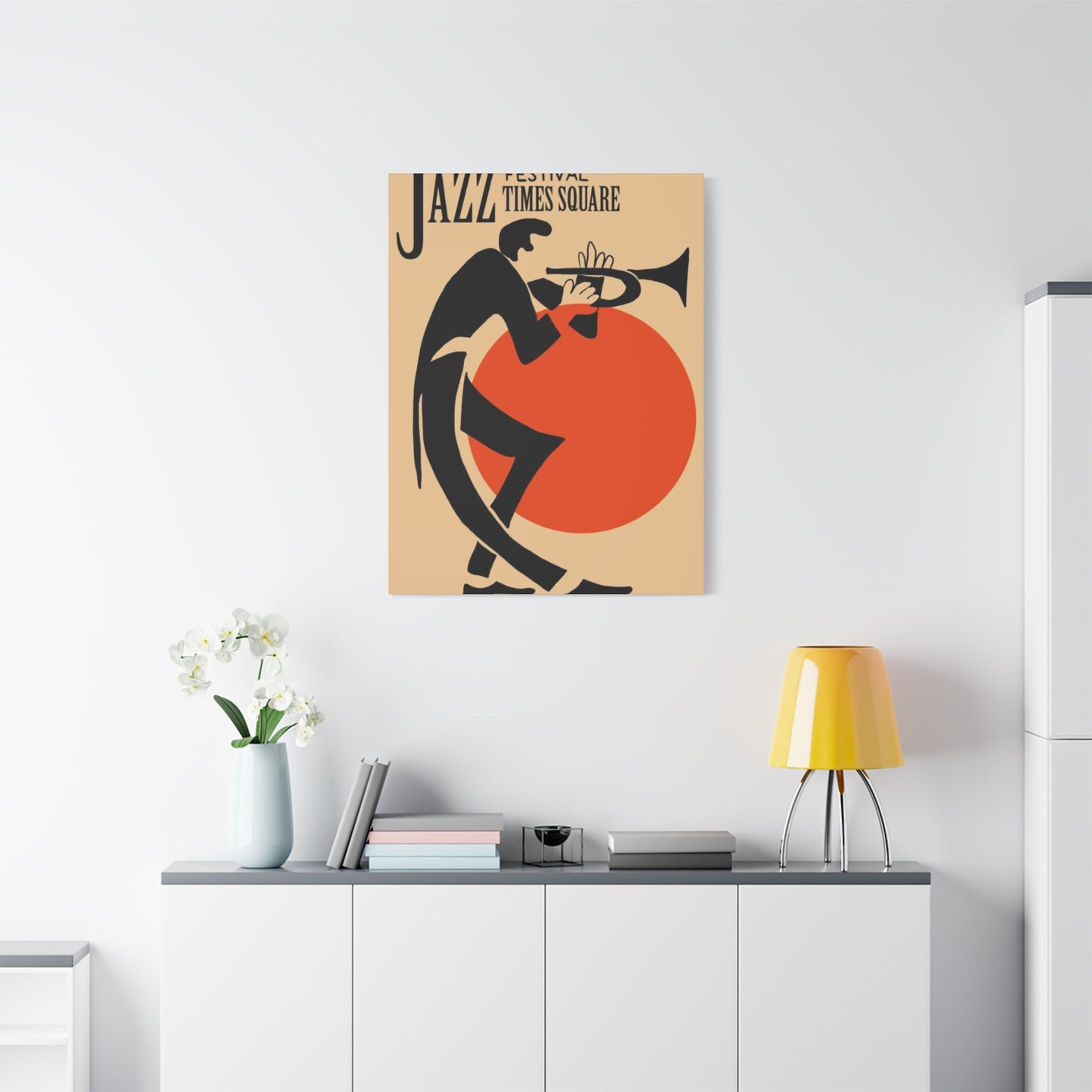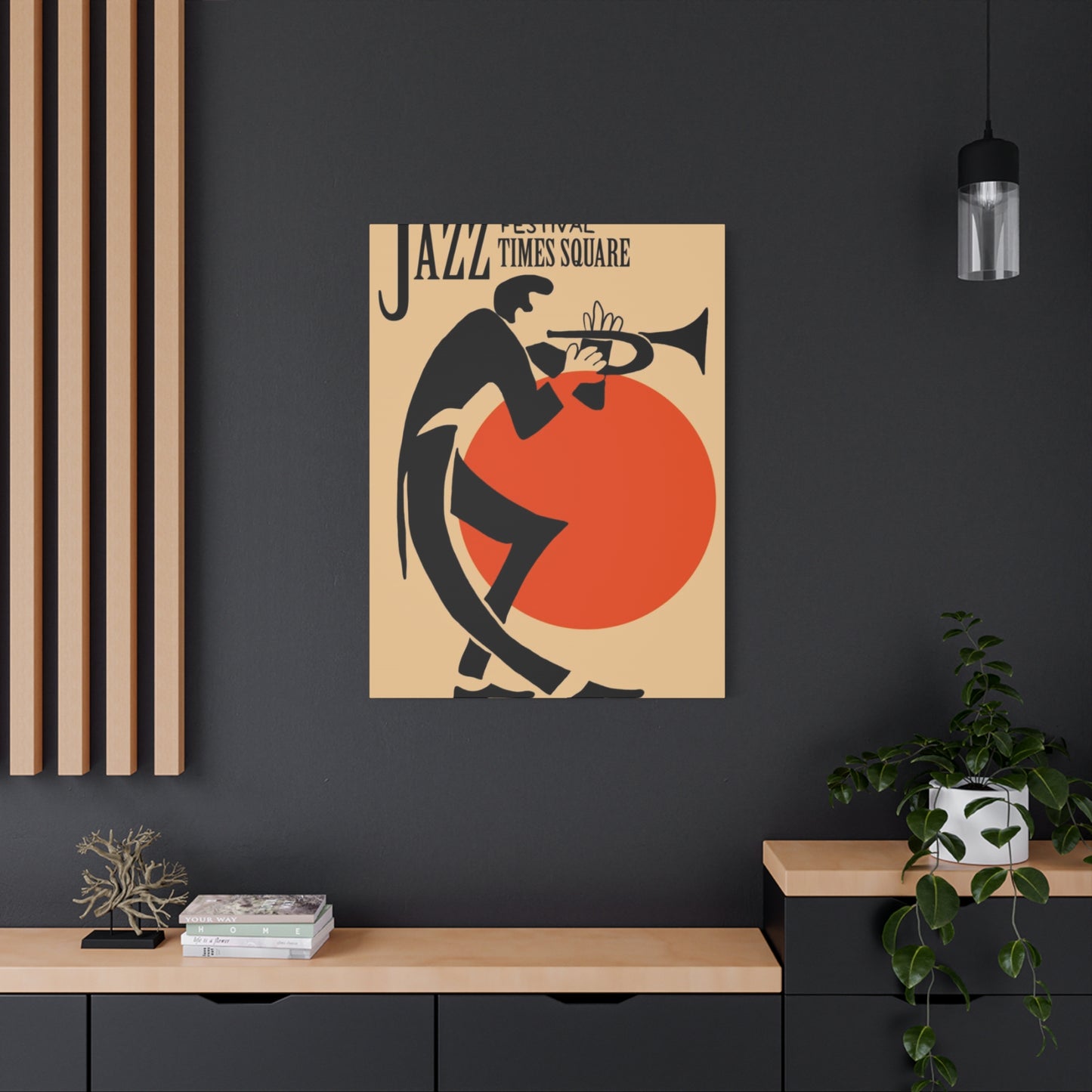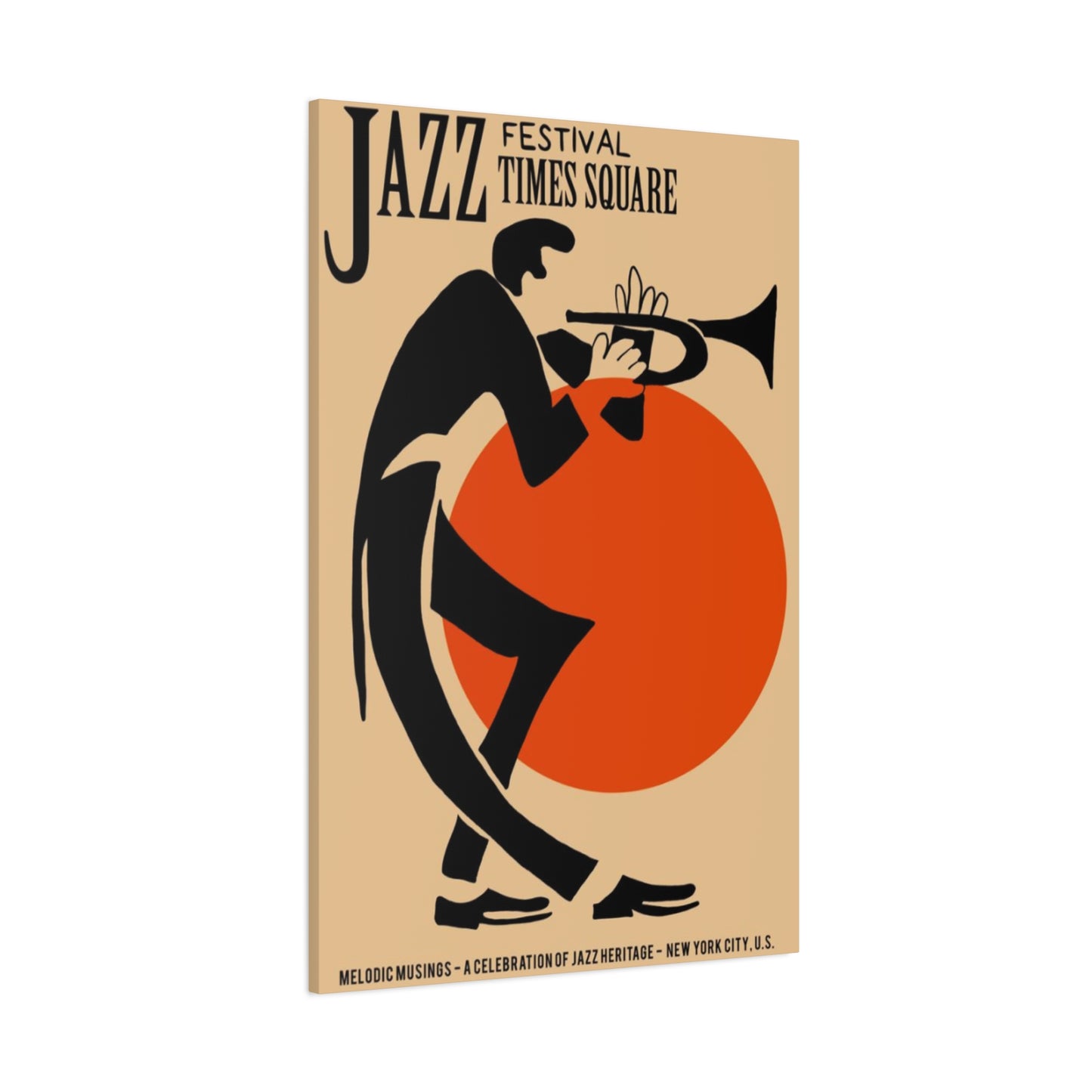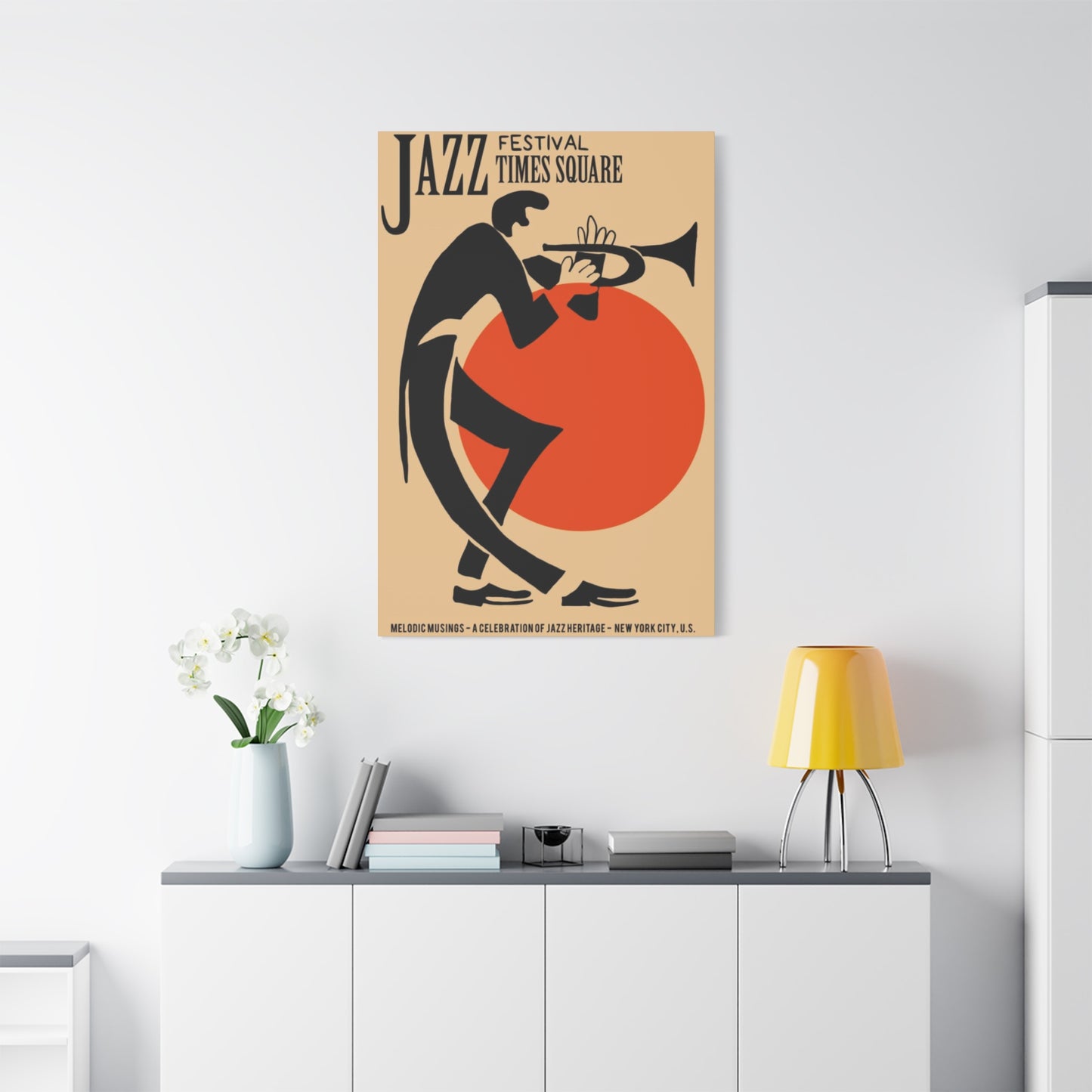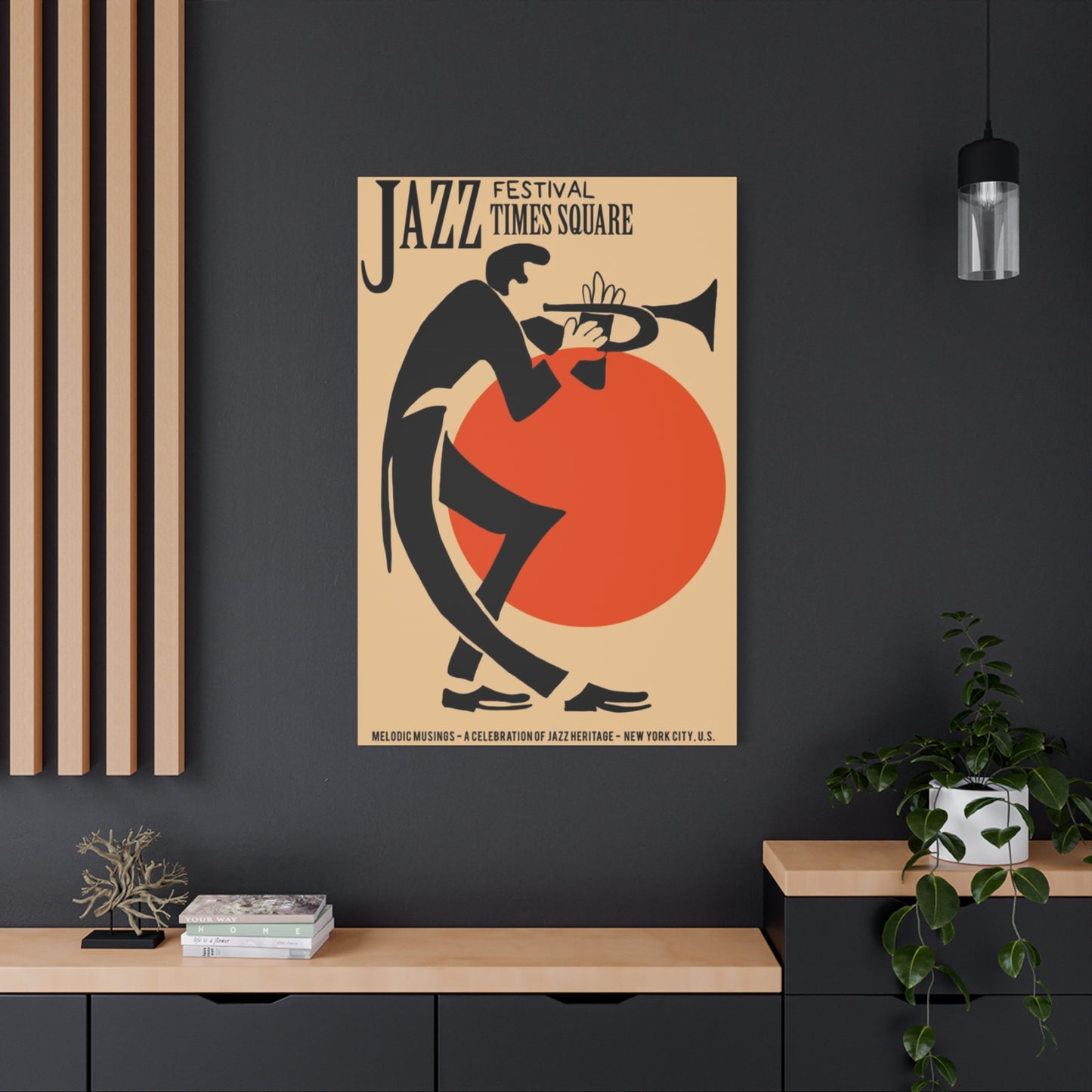Spectacular Jazz Festival Wall Art: Creative Visual Celebrations of Musical Heritage
Jazz festivals represent more than mere musical gatherings; they embody cultural celebrations that unite communities through rhythmic expressions and artistic creativity. These magnificent events have inspired countless visual artists to create stunning displays that capture the essence of improvisational music, spontaneous performances, and the electric atmosphere that defines jazz gatherings worldwide.
The visual representation of jazz festivals through artistic mediums has evolved significantly over decades, transforming from simple promotional materials to sophisticated artistic expressions that deserve recognition as legitimate art forms. Contemporary artists draw inspiration from the improvisational nature of jazz music, translating musical rhythms into visual compositions that resonate with both music enthusiasts and art collectors.
Modern jazz festival visual art encompasses various mediums, including traditional poster designs, contemporary digital illustrations, photography, abstract paintings, and mixed-media installations. Each medium offers unique opportunities to interpret the dynamic energy, cultural diversity, and emotional depth characteristic of jazz music events. Artists worldwide continue to push boundaries, experimenting with colors, textures, and compositions that reflect the innovative spirit inherent in jazz music itself.
The historical development of jazz festival visual art parallels the evolution of jazz music, beginning with early promotional posters from the 1950s and 1960s that featured bold typography and striking imagery. These early designs established visual conventions that continue to influence contemporary artists, including the use of vibrant colors, dynamic compositions, and symbolic representations of musical instruments and performers.
Today's artists approach jazz festival themes with greater artistic freedom, incorporating elements from various art movements while maintaining connections to the musical traditions that inspire their work. The result is a rich tapestry of visual expressions that celebrate both the historical significance and contemporary relevance of jazz music festivals as cultural phenomena.
Jazz Festival Poster Expressions as Artistic Statements
The tradition of creating promotional posters for jazz festivals has evolved into a sophisticated art form that transcends its original commercial purposes. These visual compositions serve as historical documents that capture the aesthetic sensibilities, cultural values, and artistic movements of different eras while promoting musical events that have shaped American and international cultural landscapes.
Early jazz festival posters from the 1940s and 1950s reflected the design principles of their time, featuring bold geometric shapes, striking typography, and limited color palettes that effectively communicated essential information while creating memorable visual impressions. These vintage designs have become highly collectible items that art enthusiasts and music lovers display in residential and commercial environments as representations of cultural heritage.
Contemporary poster artists continue this tradition while incorporating modern design elements, digital technologies, and experimental approaches that reflect current artistic trends. These modern interpretations often feature complex layered compositions, photographic elements, hand-drawn illustrations, and digital manipulations that create visually striking pieces suitable for both promotional purposes and artistic appreciation.
The compositional elements of successful jazz festival posters typically include dynamic arrangements that suggest movement and rhythm, color schemes that evoke emotional responses associated with jazz music, and typographic treatments that complement the overall design aesthetic. Artists often incorporate symbolic representations of musical instruments, particularly those most closely associated with jazz traditions, such as trumpets, saxophones, pianos, and drums.
Many contemporary artists approach poster design for jazz festivals as opportunities to experiment with visual storytelling, creating compositions that narrate the history, cultural significance, and emotional impact of jazz music through purely visual means. These narrative approaches often incorporate elements from different historical periods, cultural traditions, and artistic movements to create rich, multilayered compositions that reward careful examination and contemplation.
The printing techniques used for jazz festival posters have evolved significantly, from traditional letterpress and screen printing methods that created distinctive textures and color characteristics to modern digital printing technologies that allow for precise color reproduction and complex details. Many artists deliberately choose specific printing methods to achieve desired aesthetic effects that complement their artistic vision.
Vibrant Mural Creations Inspired by Jazz Festival Atmospheres
Large-scale mural projects inspired by jazz festivals have emerged as powerful forms of public art that transform urban environments while celebrating musical heritage and community culture. These monumental works serve multiple purposes, functioning as artistic landmarks, cultural education tools, and sources of community pride that connect neighborhoods to their musical traditions and cultural identity.
Mural artists working with jazz festival themes often draw inspiration from specific events, legendary performers, historical moments, and the general atmosphere of celebration that characterizes these musical gatherings. The scale of mural work allows artists to incorporate complex compositional elements, multiple narrative threads, and detailed representations that would be impossible to achieve in smaller formats.
The color palettes chosen for jazz festival murals typically reflect the vibrant, energetic atmosphere of these events, featuring bold combinations of warm and cool tones that create visual rhythms analogous to musical compositions. Artists often employ techniques such as color gradation, contrast, and saturation to create dynamic visual effects that suggest movement, sound, and emotional intensity.
Community involvement in jazz festival mural projects often enhances their cultural significance and local relevance. Many successful mural projects incorporate community input during the planning process, ensuring that the final artwork reflects local history, cultural values, and community aspirations while maintaining artistic integrity and visual impact.
The technical challenges of creating large-scale murals require artists to develop specialized skills in proportion, perspective, and surface preparation while working with weather-resistant materials that will maintain their appearance over time. Many mural artists collaborate with local organizations, schools, and community groups to ensure that their work contributes positively to the surrounding environment and serves the needs of the local community.
Documentation of jazz festival murals through photography and digital media has created opportunities for these works to reach audiences far beyond their physical locations. Online galleries, social media platforms, and virtual tours allow people worldwide to appreciate these monumental works and understand their cultural significance within their local contexts.
Iconic Musical Instrument Representations in Jazz Festival Artwork
The visual representation of musical instruments in jazz festival artwork serves both symbolic and aesthetic purposes, creating immediate connections between viewers and the musical traditions being celebrated while providing artists with rich compositional elements that can be interpreted in countless creative ways.
Trumpet imagery appears frequently in jazz festival art due to its association with legendary performers and its distinctive visual silhouette that translates effectively into various artistic mediums. Artists often stylize trumpet representations, exaggerating proportions, adding decorative elements, or incorporating the instrument into abstract compositions that suggest sound, movement, and musical expression.
Saxophone representations offer artists opportunities to explore curved lines, reflective surfaces, and complex mechanical details that can be interpreted realistically or abstractly depending on the artistic approach. The saxophone's distinctive shape and cultural associations make it an immediately recognizable symbol of jazz music that resonates with diverse audiences.
Piano imagery in jazz festival art ranges from realistic representations of grand pianos and keyboards to abstract interpretations that focus on the geometric patterns of keys, the rhythmic arrangements of black and white elements, or the overall form of the instrument as a sculptural object. Artists often use piano imagery to suggest harmony, complexity, and the foundational role of keyboards in jazz ensembles.
Drum set representations allow artists to explore circular forms, rhythmic patterns, and dynamic arrangements that suggest percussion, timing, and the driving energy that characterizes much jazz music. The visual complexity of drum sets provides rich source material for artists working in various styles, from photorealistic renderings to highly stylized interpretations.
Double bass imagery appears in jazz festival art as representations of the harmonic foundation and rhythmic anchor that these instruments provide in jazz ensembles. The distinctive shape and size of double basses offer artists opportunities to create strong vertical elements in their compositions while suggesting depth, resonance, and musical grounding.
Artists often combine multiple instrument representations in single compositions, creating visual ensembles that mirror the collaborative nature of jazz performance while providing opportunities for complex compositional arrangements that balance different visual elements, textures, and symbolic meanings.
Contemporary Street Art Celebrating Jazz Musical Events
The intersection of street art culture and jazz music celebration has produced dynamic visual expressions that bring jazz festival energy to urban environments through graffiti, stencil work, wheatpasting, and other street art techniques that make art accessible to diverse audiences while challenging traditional boundaries between high and popular culture.
Graffiti artists working with jazz themes often incorporate musical notation, lyrical fragments, performer portraits, and abstract representations of sound and rhythm into their work, creating pieces that function as both artistic expression and cultural commentary. These works frequently appear in neighborhoods with strong musical traditions, serving as markers of cultural identity and community pride.
Stencil techniques allow street artists to create repeatable images that can appear in multiple locations, spreading jazz festival imagery throughout urban environments while creating visual connections between different neighborhoods and communities. The high contrast and graphic quality of stencil work translates effectively to jazz themes, particularly when depicting performer silhouettes and instrument shapes.
Wheatpaste installations featuring jazz festival imagery offer opportunities for more detailed, photographic representations that can incorporate complex compositions, multiple colors, and fine details that would be difficult to achieve through other street art techniques. These temporary installations often appear in clusters around actual jazz festival locations, creating immersive environments that enhance the festival experience.
The ephemeral nature of street art creates interesting parallels with the improvisational and momentary aspects of jazz performance, as both art forms exist in specific temporal and spatial contexts that cannot be perfectly reproduced or preserved. This temporal quality adds layers of meaning to street art celebrating jazz festivals, as both forms of expression emphasize present-moment creativity and spontaneous inspiration.
Collaboration between street artists and jazz festival organizers has led to sanctioned mural projects, temporary installations, and integrated artistic programs that blur boundaries between official festival programming and grassroots cultural expression. These collaborations often result in more ambitious and permanent works that benefit both the street art and jazz music communities.
Legal considerations surrounding street art have influenced how artists approach jazz festival themes in public environments, leading to innovations in temporary installations, authorized mural programs, and gallery exhibitions that bring street art aesthetics into sanctioned cultural contexts while maintaining the rebellious spirit that characterizes both street art and jazz music.
Historical Vintage Jazz Festival Poster Design Evolution
The evolution of jazz festival poster design reflects broader changes in graphic design, printing technology, cultural attitudes, and marketing strategies while documenting the visual history of jazz music's role in American and international culture over several decades of festival programming and promotional innovation.
Early jazz festival posters from the 1940s and 1950s typically featured hand-lettered typography, limited color palettes determined by printing capabilities, and compositional approaches influenced by Art Deco and modernist design principles. These early works established visual conventions that continue to influence contemporary designers while reflecting the cultural context and technological limitations of their era.
The psychedelic poster movement of the 1960s significantly influenced jazz festival poster design, introducing experimental color combinations, distorted typography, and surreal imagery that reflected the countercultural values and artistic experimentation associated with both jazz music and visual art during this transformative period in American cultural history.
Corporate sponsorship and increased marketing budgets during the 1970s and 1980s led to more sophisticated poster designs that incorporated professional photography, refined typography, and complex multi-color printing techniques. These developments allowed for greater visual sophistication while sometimes reducing the handmade quality that characterized earlier poster designs.
The digital revolution of the 1990s and 2000s transformed jazz festival poster design by introducing new tools, techniques, and possibilities while also creating challenges related to maintaining visual identity and artistic integrity in an increasingly saturated media environment. Digital tools allowed for unprecedented creative flexibility while requiring artists to develop new technical skills and aesthetic approaches.
Contemporary jazz festival poster design continues to evolve through social media integration, interactive digital elements, and cross-platform marketing strategies that extend poster imagery across multiple media formats. Modern designers must consider how their work will appear in digital contexts while maintaining effectiveness as traditional printed promotional materials.
Collecting vintage jazz festival posters has become a specialized area of art and music memorabilia collecting, with rare examples commanding significant prices at auctions and specialized galleries. This collecting interest has increased awareness of poster design as a legitimate art form while creating markets for both original vintage pieces and contemporary works inspired by historical designs.
Creative DIY Jazz Festival Artistic Project Concepts
Do-it-yourself approaches to creating jazz festival-inspired artwork offer accessible entry points for individuals interested in expressing their appreciation for jazz music through visual art while developing creative skills and exploring personal artistic interests without requiring extensive formal training or expensive materials and equipment.
Collage techniques provide excellent starting points for DIY jazz festival art projects, allowing creators to combine photographs, magazine clippings, sheet music, ticket stubs, and other found materials into compositions that reflect personal experiences and connections to jazz music. These projects can incorporate elements from different time periods and sources to create unique narrative compositions.
Printmaking approaches, including linoleum block printing, screen printing, and monoprinting, offer opportunities to create multiple copies of jazz festival-inspired designs while learning traditional artistic techniques that connect contemporary creators to historical poster-making traditions. These methods produce distinctive visual qualities that differ from digital reproductions.
Photography projects focused on jazz festival themes can range from documentary approaches that capture festival atmospheres and performer portraits to more experimental approaches that use long exposures, multiple exposures, and digital manipulation to create abstract representations of music and movement. These projects develop technical skills while encouraging creative interpretation of musical experiences.
Mixed-media sculptures incorporating found objects, musical instruments, and traditional art materials allow three-dimensional exploration of jazz festival themes while encouraging experimentation with different materials, textures, and compositional approaches. These projects can range from small desktop pieces to larger installations suitable for home or community display.
Digital art projects using accessible software and mobile apps provide opportunities to experiment with jazz festival themes through digital illustration, photo manipulation, and graphic design while developing contemporary artistic skills and exploring how digital tools can enhance traditional artistic approaches and concepts.
Community-based DIY projects, such as collaborative murals, group exhibitions, and workshop series, extend individual creative practices into social contexts that build community connections while celebrating shared appreciation for jazz music and visual art. These projects often produce more ambitious results than individual efforts while creating opportunities for skill sharing and mutual inspiration.
Energetic Color Schemes Capturing Jazz Festival Atmospheres
The selection and application of color in jazz festival artwork plays crucial roles in conveying the emotional intensity, cultural richness, and dynamic energy that characterize these musical celebrations while creating visual experiences that resonate with viewers on both conscious and subconscious levels through associations with music, movement, and cultural meaning.
Warm color palettes featuring reds, oranges, and yellows frequently appear in jazz festival artwork to suggest the heat, passion, and energy associated with live jazz performance while creating visual experiences that feel welcoming, exciting, and emotionally engaging. These warm tones often dominate compositions while being balanced by cooler accents that provide visual contrast and compositional stability.
Cool color schemes incorporating blues, purples, and greens can effectively capture the sophisticated, contemplative aspects of jazz music while referencing the "blue notes" that characterize much jazz harmony and the intimate, late-night atmosphere of many jazz performances. These cooler palettes often create more subdued, elegant impressions that appeal to different aesthetic preferences.
High-contrast color combinations that pair warm and cool tones create dynamic visual tensions that mirror the harmonic complexities and rhythmic interplay characteristic of jazz music performance. These contrasting schemes can suggest the call-and-response patterns, improvisational dialogue, and creative tensions that define jazz as a collaborative art form.
Monochromatic color schemes that explore variations within single color families can create sophisticated, unified impressions that focus attention on compositional elements, textural variations, and tonal relationships rather than relying on color contrast for visual impact. These approaches often produce elegant, timeless results that age well over time.
Gradient transitions between colors can suggest the fluid, continuous nature of musical improvisation while creating visual movements that guide viewer attention through compositional elements. These smooth color transitions often work particularly well in abstract representations of jazz festival themes where literal representation is less important than emotional suggestion.
Historical color associations with different jazz eras influence contemporary color choices, with artists often referencing the earth tones of early blues traditions, the vibrant hues of swing era optimism, the muted palettes of cool jazz sophistication, or the bold colors associated with fusion and contemporary jazz innovation.
Renowned Jazz Festival Visual Identity and Branding Elements
The development of distinctive visual identities for major jazz festivals represents sophisticated exercises in brand design that must balance commercial effectiveness with artistic integrity while creating memorable impressions that distinguish individual festivals from competitors and establish lasting connections with audiences across diverse demographic groups and cultural backgrounds.
The Newport Jazz Festival's visual identity has evolved over decades while maintaining core elements that reference its prestigious history and seaside location through color palettes, typographic choices, and imagery that suggest both musical excellence and coastal elegance. The festival's branding demonstrates how successful visual identities can adapt to changing times while maintaining recognizable consistency.
The Montreux Jazz Festival's distinctive visual approach incorporates elements that reflect its Swiss location, international character, and commitment to musical diversity through sophisticated graphic design that appeals to global audiences while maintaining local cultural connections. The festival's branding success demonstrates the importance of cultural sensitivity in international festival marketing.
The Montreal International Jazz Festival has developed visual systems that celebrate both its French Canadian cultural context and its role as one of the world's largest jazz festivals through bilingual design elements, cultural imagery, and color schemes that reflect the festival's unique position in North American jazz culture.
Smaller regional festivals often develop visual identities that emphasize local connections, community involvement, and distinctive cultural characteristics that differentiate them from larger, more commercial events while building strong local support and regional recognition that sustains their programming over multiple years.
The consistency of visual identity across multiple media platforms, from traditional print materials to digital interfaces and merchandise design, requires careful attention to brand guidelines, color standards, and typographic specifications that ensure recognition and professional appearance regardless of the medium or context in which festival imagery appears.
Successful festival branding often incorporates flexible visual systems that can accommodate different types of content, varying layout requirements, and diverse application needs while maintaining consistent brand recognition and aesthetic quality across all festival communications and promotional materials.
Transforming Jazz Festival Photography into Artistic Displays
The conversion of documentary jazz festival photography into artistic displays requires careful consideration of compositional elements, presentation methods, and contextual frameworks that transform functional documentation into aesthetic experiences while preserving the cultural and historical significance of the original photographic content and musical moments being preserved.
Black and white photography often enhances the timeless quality of jazz festival imagery while focusing attention on compositional elements, emotional expressions, and the interplay of light and shadow that characterizes many jazz performance environments. The absence of color can intensify emotional impact while creating connections to historical jazz photography traditions.
Large-scale printing of jazz festival photographs creates immersive viewing experiences that allow audiences to appreciate fine details, subtle expressions, and atmospheric qualities that might be lost in smaller formats. These oversized presentations often work particularly well in gallery contexts where viewers can spend extended time examining individual images.
Series presentations that group related photographs create narrative experiences that document festival progression, performer interactions, and audience engagement while providing comprehensive views of festival culture that individual images cannot achieve. These series approaches often work well for both gallery exhibitions and permanent installations.
Mixed-media approaches that combine photography with other artistic elements, such as painted backgrounds, collage elements, or three-dimensional components, can enhance the expressive potential of jazz festival photography while creating unique artistic objects that transcend traditional photographic presentation methods.
Digital manipulation and post-processing techniques offer opportunities to enhance the artistic impact of jazz festival photography through color adjustments, compositional modifications, and creative effects that emphasize particular aspects of the original images while maintaining their documentary value and cultural authenticity.
The selection of appropriate framing, matting, and display methods significantly influences how jazz festival photography functions as artwork, with choices about materials, colors, and presentation styles affecting viewer perception and the overall aesthetic impact of photographic displays in both residential and commercial environments.
Abstract Artistic Interpretations of Jazz Festival Soundscapes
Abstract artistic approaches to jazz festival themes allow artists to explore the purely formal elements of visual art while responding to the improvisational, emotional, and rhythmic qualities of jazz music through non-representational compositions that engage viewers on sensory and emotional levels without relying on literal imagery or recognizable subject matter.
Color field painting techniques can effectively translate the harmonic complexities and tonal relationships of jazz music into visual experiences through large areas of color that interact, blend, and contrast in ways that suggest musical relationships while creating contemplative viewing experiences that reward sustained attention and emotional engagement.
Gestural painting approaches that emphasize expressive brushwork, dynamic mark-making, and spontaneous compositional decisions mirror the improvisational spirit of jazz performance while creating energetic visual experiences that capture something of the immediate, present-moment creativity that characterizes live jazz performance.
Rhythm and repetition in abstract compositions can suggest the metrical foundations and repetitive patterns that underlie jazz improvisation while creating visual experiences that guide viewer attention through compositional elements in ways that parallel how musical rhythm guides listener attention through temporal musical structures.
Layered compositional approaches that build complex visual relationships through overlapping elements, transparent effects, and interweaving forms can suggest the polyphonic nature of jazz ensemble performance while creating rich visual experiences that reveal new details and relationships upon repeated viewing.
Experimental techniques such as paint pouring, dripping, and other chance-based methods can introduce elements of unpredictability and spontaneity that parallel the improvisation central to jazz performance while creating unique textural effects and visual surprises that enhance the expressive potential of abstract compositions.
The scale of abstract jazz festival artwork affects its impact and appropriate contexts, with larger works creating immersive environments suitable for public spaces and smaller works functioning better in intimate residential settings where viewers can develop personal relationships with individual pieces over time.
Contemporary Digital Art Approaches to Jazz Festival Themes
Digital art creation offers unprecedented opportunities for artists to explore jazz festival themes through innovative techniques, interactive elements, and multimedia approaches that extend traditional artistic boundaries while engaging contemporary audiences accustomed to digital media experiences and expecting technological sophistication in artistic presentations.
Vector illustration techniques allow for precise control over compositional elements while creating scalable artwork that maintains quality across different sizes and applications. These approaches work particularly well for jazz festival poster design, merchandise graphics, and digital marketing materials that must function effectively across various media platforms.
Digital painting and illustration software provide tools for creating highly detailed, photorealistic representations as well as stylized, expressive works that combine traditional painting aesthetics with digital precision and flexibility. These approaches offer unlimited color palettes and the ability to experiment freely without material costs or permanence concerns.
Photo manipulation and composite imaging enable artists to combine multiple photographic sources, adjust colors and lighting, and create surreal or enhanced representations of jazz festival themes that would be impossible to achieve through traditional photography alone. These techniques can produce both subtle enhancements and dramatic transformations.
Animation and motion graphics add temporal dimensions to jazz festival artwork, creating moving images that can suggest musical rhythm, performer movement, and the dynamic energy of live performance through visual animation that parallels musical structures and improvisational development.
Interactive digital installations and applications allow audience participation in jazz festival-themed artworks through touch screens, motion sensors, and other input devices that respond to viewer actions by generating visual or audio responses. These interactive approaches create participatory experiences that mirror the collaborative nature of jazz performance.
Virtual and augmented reality applications offer immersive experiences that can transport viewers into jazz festival environments, allow exploration of three-dimensional artistic creations, and provide educational content about jazz history and culture through engaging, technologically sophisticated presentation methods.
Mixed Media Assemblages Celebrating Jazz Musical Heritage
Mixed media artistic approaches to jazz festival themes combine traditional and contemporary materials, techniques, and conceptual frameworks to create complex, multilayered works that reflect the diverse cultural influences, historical developments, and ongoing evolution of jazz music while offering viewers rich, multisensory experiences that reward careful examination.
Found object integration allows artists to incorporate actual musical instruments, sheet music, recording equipment, and other jazz-related artifacts into artistic compositions that blur boundaries between artwork and historical documentation while creating authentic connections to jazz culture and musical heritage.
Textile elements, including fabric collage, embroidery, and fiber art techniques, can add textural richness and cultural references to jazz festival artwork while drawing connections to the rich traditions of African American textile arts that share historical and cultural roots with jazz music development.
Three-dimensional sculptural elements extend jazz festival artwork beyond traditional two-dimensional formats, creating installations and constructions that occupy physical environments and engage viewers through spatial relationships, lighting effects, and changing perspectives that reveal different aspects of the work from various viewing positions.
Collage techniques that combine photographs, printed materials, handwritten text, and other found or created elements allow artists to construct complex narratives and visual relationships that reflect the sampling, quotation, and recombination strategies that characterize much jazz composition and improvisation.
Sound elements integrated into mixed media jazz festival artworks create multisensory experiences that directly incorporate musical components while challenging traditional boundaries between visual and audio art forms. These works often require technical expertise in electronics and sound design.
Documentation and preservation of mixed media jazz festival artworks present unique challenges due to the variety of materials and techniques involved, requiring careful attention to conservation issues and often benefiting from detailed photographic or video documentation that records the work's appearance and any temporal changes in its materials or presentation.
Environmental Installations Inspired by Jazz Festival Atmospheres
Large-scale environmental installations inspired by jazz festivals create immersive experiences that surround viewers with artistic interpretations of festival atmospheres while transforming architectural environments and outdoor locations into artistic venues that celebrate jazz music and culture through spatial design and environmental modification.
Temporary installations in public locations can activate urban environments during actual jazz festivals while providing artistic programming that complements musical performances and engages audiences who might not traditionally attend festival events. These installations often generate community interest and media attention that benefits both the festival and participating artists.
Permanent installations in cultural institutions, educational environments, and public buildings create lasting celebrations of jazz heritage while providing ongoing educational opportunities and cultural enrichment that extends jazz festival impact beyond the limited duration of annual festival events.
Lighting design plays crucial roles in environmental jazz festival installations, with carefully planned illumination creating atmospheric effects, highlighting specific elements, and establishing moods that enhance the overall artistic experience while ensuring visitor safety and artwork preservation.
Sound integration in environmental installations allows for the incorporation of actual jazz recordings, live performance elements, or abstract audio components that complement visual elements while creating comprehensive sensory experiences that engage multiple senses simultaneously.
Interactive elements encourage audience participation in environmental jazz festival installations through touch-activated components, motion-responsive systems, and other engagement strategies that make visitors active participants rather than passive observers while maintaining respect for the artwork and other viewers.
Maintenance and conservation of environmental installations require ongoing attention to weather resistance, vandalism prevention, and normal wear from public interaction while ensuring that the installation continues to function as intended and maintains its artistic impact over time.
Cultural Education Through Jazz Festival Visual Documentation
Jazz festival visual documentation serves important educational functions by preserving cultural heritage, documenting musical evolution, and providing educational resources that enhance understanding of jazz music's cultural significance while making this knowledge accessible to diverse audiences through compelling visual presentations.
Historical documentation projects that systematically photograph, video record, and otherwise document jazz festivals create archives that serve researchers, educators, and future audiences while ensuring that important cultural events are preserved for historical analysis and educational use long after the original events have concluded.
Educational display development transforms documentary materials into structured presentations that explain jazz history, cultural context, and musical significance through carefully organized visual materials that support formal and informal learning experiences in schools, museums, and community centers.
Biographical documentation that focuses on individual performers, composers, and other key figures in jazz history creates personal connections that help audiences understand the human dimensions of musical achievement while providing role models and inspiration for aspiring musicians and artists.
Community engagement through educational programming that incorporates jazz festival visual documentation builds local connections to musical heritage while encouraging community participation in cultural preservation and artistic expression through workshops, exhibitions, and collaborative projects.
Digital archiving and online access expand the reach of jazz festival visual documentation beyond geographic limitations while ensuring long-term preservation through multiple storage formats and backup systems that protect against loss while making materials searchable and accessible to global audiences.
Collaboration with educational institutions ensures that jazz festival visual documentation serves formal educational needs while meeting curriculum standards and supporting classroom instruction through materials specifically designed for educational use and aligned with learning objectives.
Regional Variations in Jazz Festival Visual Representation
Different geographic regions have developed distinctive approaches to jazz festival visual representation that reflect local cultural traditions, artistic movements, and community characteristics while maintaining connections to broader jazz culture and international festival networks that share common musical and cultural foundations.
New Orleans jazz festival imagery often incorporates elements that reference the city's unique cultural heritage, including architectural details, culinary traditions, Mardi Gras celebrations, and the distinctive cultural mixing that characterizes New Orleans jazz traditions. These regional references create authentic connections between visual art and local cultural identity.
European jazz festival visual approaches frequently emphasize sophisticated design aesthetics that reflect European graphic design traditions while incorporating elements that reference specific national cultures and local artistic movements. These international perspectives enrich the global jazz festival visual vocabulary while maintaining cultural authenticity.
West Coast jazz festival imagery often reflects the region's casual lifestyle, natural beauty, and innovative artistic culture through color palettes, compositional approaches, and subject matter that distinguish it from East Coast or international festival visual traditions while maintaining recognition as part of the broader jazz festival artistic category.
Rural and small-town jazz festivals often develop visual identities that emphasize community connections, local landmarks, and regional cultural characteristics while competing effectively with larger urban festivals through authentic expressions of local identity and community pride that appeal to both residents and visitors.
International fusion approaches that combine jazz festival visual elements with local artistic traditions create unique hybrid forms that respect both jazz culture and regional artistic heritage while appealing to diverse audiences and creating distinctive festival identities that stand out in competitive festival markets.
Economic factors influence regional variations in jazz festival visual representation, with budget limitations encouraging creative solutions, local artist collaboration, and community involvement that often produce more authentic and community-connected results than expensive professional design services.
Technical Aspects of Creating Jazz Festival Visual Art
The technical execution of jazz festival visual art requires understanding of various artistic mediums, tools, and processes while maintaining focus on artistic vision and cultural authenticity throughout the creative process from initial concept development through final presentation and public display.
Color theory applications in jazz festival art require understanding of how different color combinations create emotional effects, suggest musical relationships, and function in various lighting conditions and presentation contexts. Artists must consider how their color choices will appear in different environments and media formats.
Composition principles that guide visual organization help artists create effective jazz festival artwork through careful attention to balance, rhythm, focal points, and visual flow that guide viewer attention and create satisfying aesthetic experiences while communicating intended meanings and emotional content.
Material selection affects both the appearance and longevity of jazz festival artwork, with artists needing to consider factors such as archival quality, weather resistance, and compatibility with chosen presentation methods while balancing cost considerations with artistic requirements and intended lifespan.
Printing and reproduction technologies determine how jazz festival artwork reaches audiences through various formats, from small postcards and posters to large-scale reproductions and digital displays. Artists must understand how their work will translate across different reproduction methods and adjust their approach accordingly.
Digital workflow management becomes increasingly important as artists incorporate digital tools into their creative processes, requiring understanding of file formats, color management, resolution requirements, and backup systems that protect work and ensure quality results across different output methods.
Professional presentation standards for jazz festival artwork include proper framing, appropriate lighting, informative labeling, and secure installation methods that protect artwork while maximizing its visual impact and educational value in exhibition contexts.
Business and Commercial Applications of Jazz Festival Artwork
Jazz festival artwork serves various commercial purposes beyond pure artistic expression, including marketing, merchandise, branding, and tourism promotion that generate economic value while supporting both artists and festival organizations through multiple revenue streams and promotional benefits.
Licensing opportunities allow jazz festival artists to generate ongoing income from their work through reproduction rights, merchandise applications, and commercial use agreements that provide financial support for continued artistic development while expanding the reach and influence of jazz festival visual culture.
Merchandise development transforms jazz festival artwork into products such as posters, t-shirts, mugs, and other items that serve both promotional and revenue-generating functions while allowing festival attendees to take home lasting reminders of their cultural experiences and support for jazz music.
Corporate sponsorship integration requires careful balance between commercial requirements and artistic integrity, with successful collaborations maintaining artistic quality while providing necessary financial support for both artists and festival organizations through mutually beneficial partnerships.
Tourism promotion through jazz festival artwork helps communities attract visitors, boost local economies, and establish cultural identities that distinguish them from competing destinations while celebrating local heritage and supporting ongoing cultural programming and community development.
Art market considerations affect how jazz festival artwork is priced, marketed, and collected, with artists needing to understand market dynamics, collector interests, and investment potential while maintaining focus on artistic quality and cultural authenticity that sustains long-term value and reputation.
Gallery and exhibition opportunities provide platforms for jazz festival artists to reach new audiences, establish professional credibility, and generate sales while contributing to cultural programming that benefits entire communities through enhanced cultural offerings and artistic education.
Preservation and Archival Considerations for Jazz Festival Art
The long-term preservation of jazz festival artwork requires careful attention to materials, storage conditions, and documentation practices that ensure cultural heritage preservation while making these important works accessible to current and future audiences through proper archival management and conservation procedures.
Archival material standards for jazz festival artwork focus on using acid-free papers, lightfast pigments, and stable mounting materials that resist degradation over time while maintaining the visual qualities that make the artwork culturally and aesthetically valuable for historical preservation and continued appreciation.
Climate control requirements for jazz festival artwork storage include managing temperature, humidity, and air quality to prevent deterioration while providing security against theft, damage, and unauthorized access through proper archival facilities and handling procedures that protect valuable cultural materials.
Digital preservation strategies complement physical preservation by creating high-quality digital records that document artwork appearance, provide access copies that reduce handling of originals, and ensure that visual information survives even if physical artwork is lost or severely deteriorated through disaster or age.
Documentation standards for jazz festival artwork include detailed cataloging information, condition reports, provenance records, and contextual information that enhances understanding and appreciation while providing necessary information for insurance, authentication, and scholarly research purposes.
Conservation treatments for damaged or deteriorating jazz festival artwork require specialized expertise and careful decision-making that balances preservation needs with respect for artistic integrity while considering the cultural significance and historical value of individual works within the broader context of jazz visual heritage.
Access policies for archived jazz festival artwork must balance preservation requirements with educational and cultural needs, providing reasonable access for researchers, educators, and the public while protecting valuable materials from damage and ensuring their availability for future generations through responsible stewardship practices.
Jazz Festival Visual Art Development
Emerging trends in jazz festival visual art reflect broader changes in technology, cultural attitudes, and artistic practices while maintaining connections to jazz tradition and community values that have sustained this art form through previous periods of change and innovation.
Digital integration continues expanding through virtual reality experiences, interactive online exhibitions, and augmented reality applications that enhance physical artwork with digital components while reaching global audiences and providing educational content that extends beyond traditional exhibition formats.
Sustainability concerns increasingly influence jazz festival artwork creation through environmentally responsible material choices, energy-efficient production methods, and artwork concepts that address environmental themes while maintaining artistic quality and cultural relevance in an era of increased environmental awareness.
Community collaboration trends emphasize participatory art projects, community-created exhibitions, and collaborative decision-making processes that ensure jazz festival artwork serves community needs while building local capacity for ongoing cultural programming and artistic development.
Cross-cultural exchange through international artist residencies, collaborative projects, and cultural exchange programs enriches jazz festival visual art by incorporating diverse perspectives and artistic traditions while strengthening global connections within the jazz community and expanding artistic vocabularies.
Technology accessibility improvements make digital art creation tools more affordable and user-friendly while expanding opportunities for diverse artists to participate in jazz festival visual art creation regardless of economic background or geographic location through democratized access to professional-quality creative tools.
Educational integration trends connect jazz festival visual art with formal and informal educational programming through curriculum development, teacher training, and community workshops that ensure this cultural knowledge transfers effectively to new generations while maintaining relevance and accessibility.
Conclusion
The rich tapestry of jazz festival visual art represents a dynamic and evolving cultural phenomenon that bridges the worlds of music and visual expression while serving multiple functions within communities, educational institutions, and cultural organizations worldwide. From historical poster designs that document decades of festival evolution to contemporary digital installations that push artistic boundaries, jazz festival artwork continues to celebrate musical heritage while embracing innovation and technological advancement.
The various forms of jazz festival visual expression, including traditional posters, vibrant murals, abstract interpretations, street art, and mixed-media installations, demonstrate the versatility and enduring appeal of jazz music as artistic inspiration. These diverse approaches ensure that jazz festival artwork remains relevant and engaging to contemporary audiences while honoring the cultural traditions and musical innovations that define jazz as America's most distinctive contribution to world music culture.
The technical aspects of creating, preserving, and presenting jazz festival artwork require ongoing attention to materials, methods, and professional standards that ensure both artistic quality and cultural authenticity. Artists working in this field must balance creative vision with practical considerations while remaining connected to the musical and cultural communities that provide inspiration and support for their artistic endeavors.
Commercial and educational applications of jazz festival artwork demonstrate its value beyond pure aesthetic appreciation, serving tourism promotion, community development, cultural education, and economic development goals while maintaining artistic integrity and cultural significance. These multiple functions ensure continued support for jazz festival visual art creation while expanding.


















